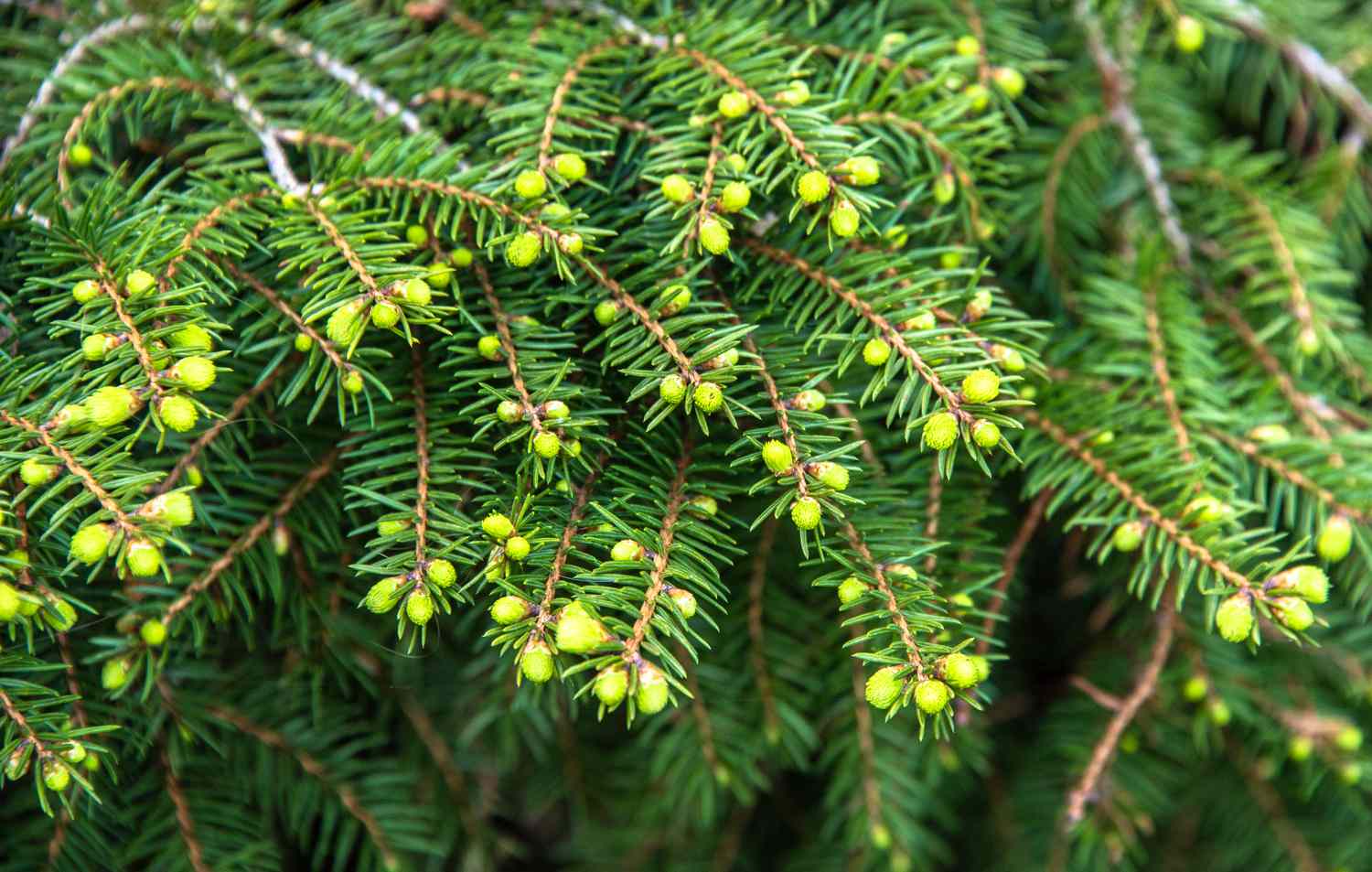Evergreen bushes are an exquisite addition to any panorama, with many kinds even providing curiosity via the coldest days of winter. Nonetheless like all plant, there are a selection of species you could stay away from planting in your yard. Some evergreens are invasive and could also be arduous to remove as quickly as established. If left to unfold, they are going to take necessary nutritional vitamins from completely different fascinating crops rising in your panorama. Furthermore, some evergreen bushes comprise toxic leaves or fruit that could be dangerous to pets, folks, and wildlife. To ensure you’re selecting the best varieties in your panorama, we spoke to an arborist and horticulturist who shared the evergreen bushes you could in no way plant in your yard.
- Eric North, program supervisor of metropolis forestry and ISA licensed arborist at Arbor Day Foundation, the world’s largest member nonprofit dedicated to planting bushes
- Damon Abdi, horticultural educated on the Hammond Evaluation Station at Louisiana State Faculty’s AgCenter
Redwood
Redwoods (Sequoia sempervirens) are certainly one of many largest and most spectacular tree species on this planet. “This species can develop to over 300 ft tall and reside a pair millennia,” says Eric North, program supervisor of metropolis forestry and ISA licensed arborist at Arbor Day Foundation. “The sheer measurement of the species makes it robust to consider the way it will even slot in most yards. Given the dimensions and longevity of the tree I would not advocate planting this species in a yard.” For a smaller choice, ponder dawn redwood (Metasequoia glyptostroboides), a deciduous conifer that is associated in look.
Manchineel
Manchineel (Hippomane mancinella), a small tree with evergreen leaves, is native in South Florida, Mexico, and Central and South America. “This tree is often listed as one of many poisonous bushes on this planet,” says North. “The sap could trigger important pores and pores and skin irritation with experiences of people creating pores and pores and skin rashes after trying to find shelter beneath the tree when it’s raining. The fruit could be toxic and could also be lethal if ingested.”
Yew
There are a selection of sorts of yew (Taxus spp.), along with tree and shrub sorts. Whereas North appreciates the look of this plant, he notes that there are downsides to rising it in your yard. “Most elements of the yew comprise taxine alkaloids, which are toxic when ingested. There are documented circumstances of pets, livestock, and individuals who have flip into gravely unwell or died from ingesting elements of the plant,” says North. “You most likely have a yard frequented by pets and different folks, I prefer to suggest steering away from yew to stay away from potential effectively being factors from unintentional ingestion.”
Coulter Pine
Getty Pictures
Coulter pine (Pinus coulteri) is a medium-sized tree native to the western U.S. and elements of Mexico. “Most pines make a pleasing addition to a yard, providing year-round inexperienced and habitat for birds and completely different wildlife,” says North. “However, the coulter pine produces cones as a lot as 14 inches prolonged, weighing 4 to 6 kilos. A falling cone could also be damaging to property and different folks.”
Australian Pine
Not an actual pine, Australian pine (Casuarina equisetifolia) is a fast-growing evergreen launched to the U.S. inside the late 1800s and is now thought-about invasive. “Together with being a problematic invasive species, the tree can leach allelopathic compounds (pure chemical substances) that inhibit plant improvement,” says North. These compounds can take nutritional vitamins away from fascinating crops in your panorama.
Alder Buckthorn
Alder buckhorn (Frangula alnus) is a small, flowering tree that could be evergreen or deciduous. Whereas it’s pretty to check out, the invasive conduct of this species can put stress in your panorama. “Not solely does this plant aggressively unfold through suckers, nonetheless birds love the berries and will readily disperse seeds all via an area,” says horticultural educated Damon Abdi. “Initially imported from Europe to perform a hedge and as a provide of meals for wildlife, this plant is now usually acknowledged as an invasive species inside the Northeast and Midwest.”
Chinese language language Privet
Chinese language language privet (Ligustrum sinense) is one different invasive evergreen tree. It was launched to the U.S. from Asia inside the nineteenth century for use inside the panorama, nonetheless is a prolific seed producer and readily spreads by means of suckers, says Abdi. As quickly as established, this can be very robust to remove from the panorama. What’s additional, its flower fragrance is taken into consideration by many to be unappealing.
English Holly
English holly (Ilex aquifolium) is native to Europe and regarded invasive in elements of the Pacific Northwest, because it might probably crowd out understory crops in forests. “Seed unfold by means of birds contributes to its invasive nature,” says Abdi. “The sharply pointed leaves can pose a prickly disadvantage inside the panorama.”
Leyland Cypress
Leyland cypress (Cupressocyparis leylandii) is a fast-growing species that is usually grown as a hedge; however, it is extraordinarily vulnerable to sickness. “Root rots and cankers are widespread sickness factors with leyland cypress,” says Abdi. These sicknesses are generally a outcomes of poor spacing and planting practices. Excessive drought and poor drainage could lead to sicknesses with this choice.
